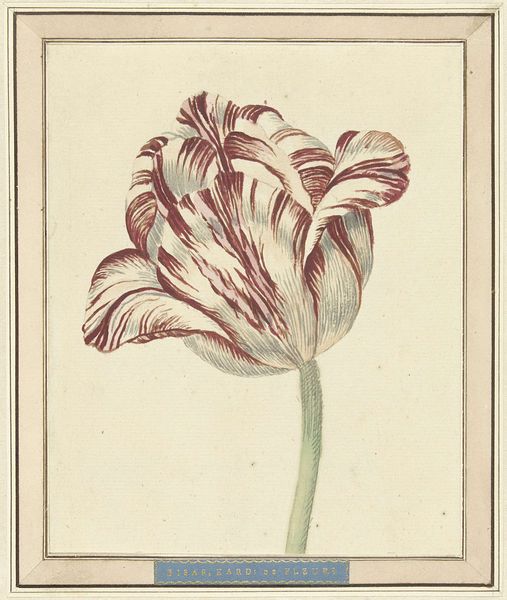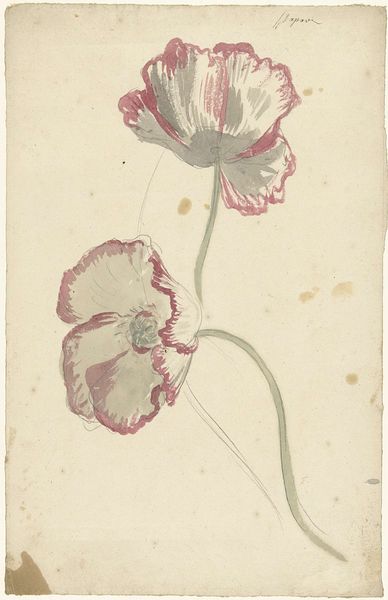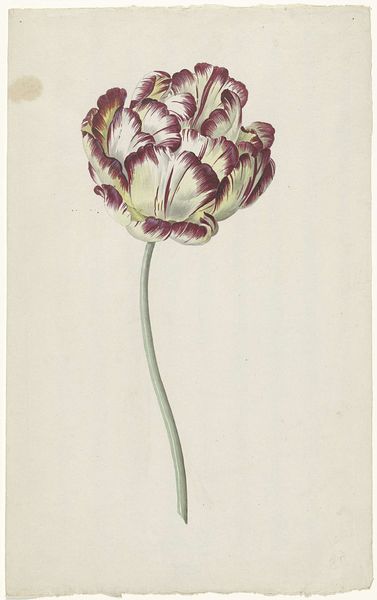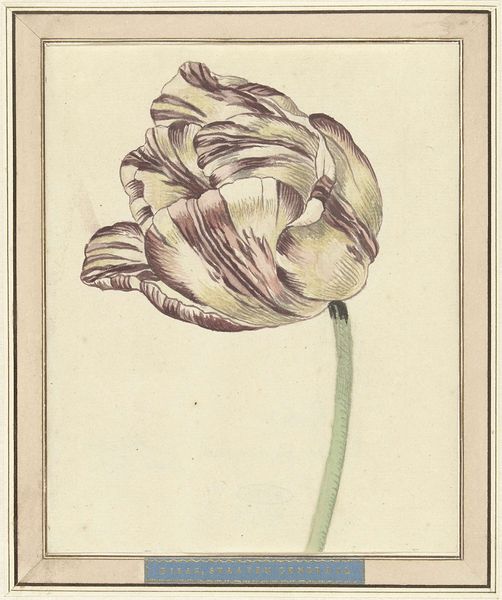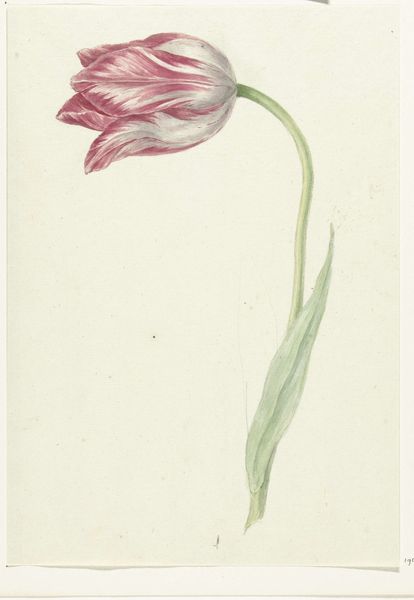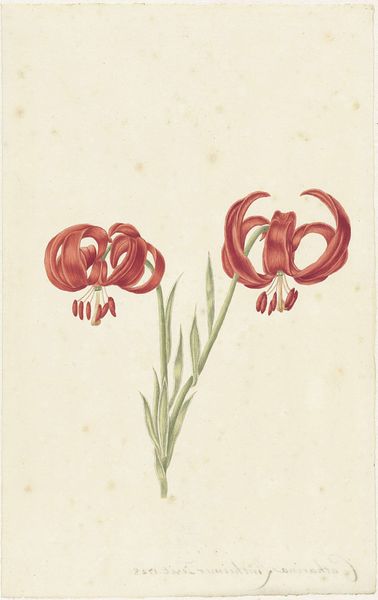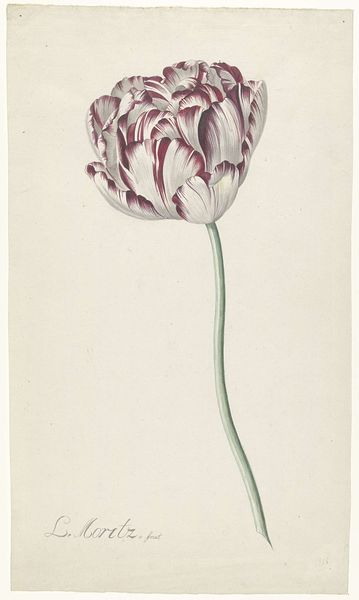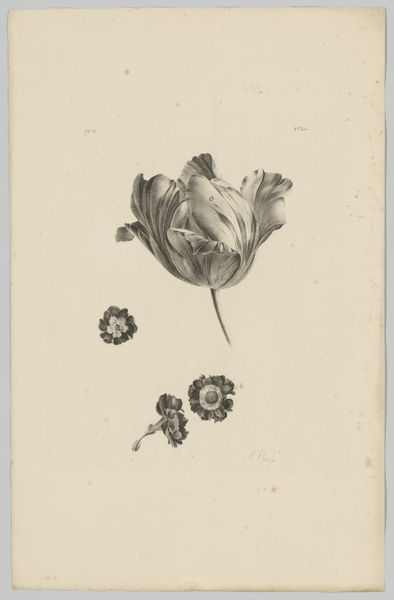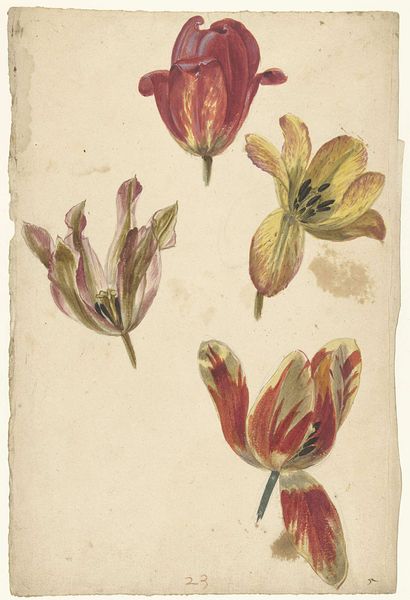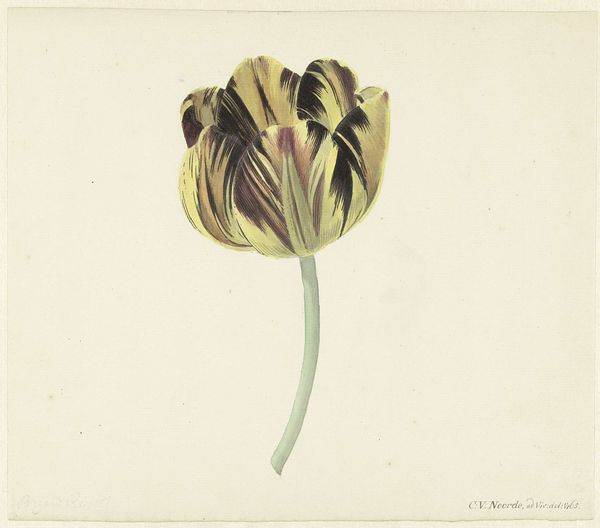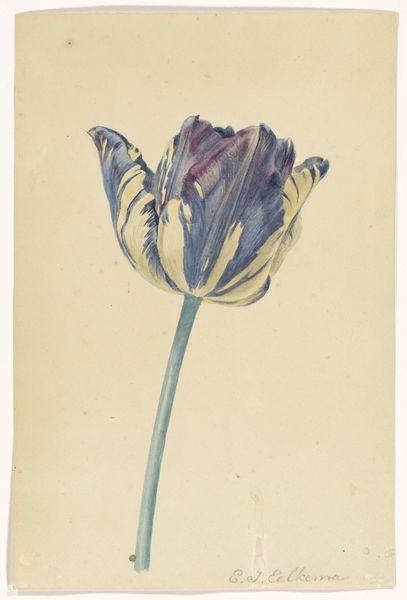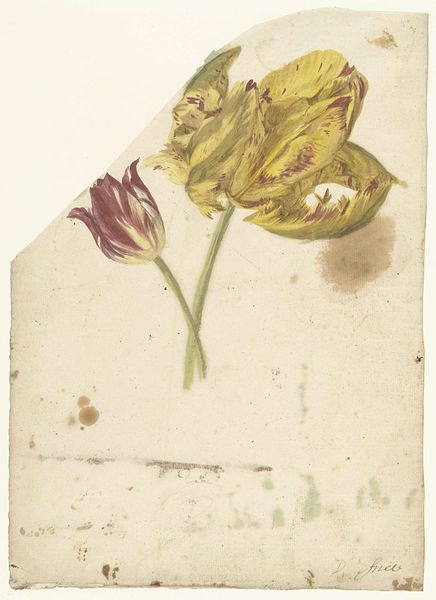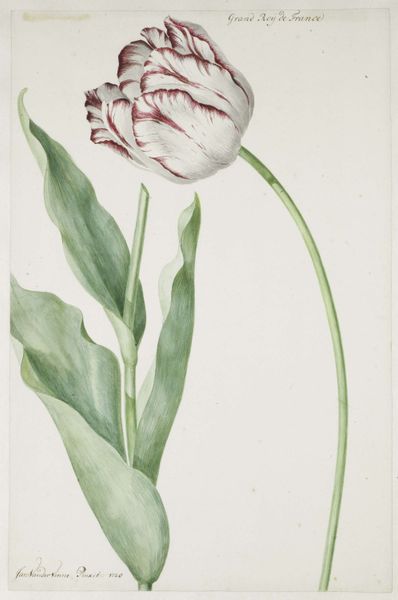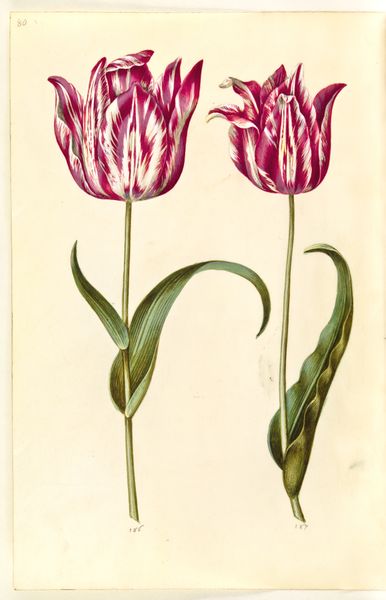
drawing, watercolor, ink
#
drawing
#
dutch-golden-age
#
watercolor
#
ink
#
watercolour illustration
Dimensions: height 438 mm, width 280 mm
Copyright: Rijks Museum: Open Domain
Curator: Here we have Jan Jansz. van der Vinne's "Two Red-and-white Tulips," created sometime between 1744 and 1805. The artwork combines ink and watercolor in a delicate drawing. Editor: My first impression is one of austere elegance, there’s such economy in the use of line and color, producing such detail. The stark contrast isolates these perfect tulip specimens as aesthetic objects of nature. Curator: The controlled medium allows us to consider the artist's mark making as intrinsic to his depiction of the tulip form. Note how each precise application of pigment delineates not just color but volume and the very structure of the petal itself. Editor: Right, and understanding Vinne's probable workshop practices, do we understand how labor informs production here? How do assistants contribute, and is this intended for scientific record or solely aesthetic consumption within wealthy circles already deeply invested in tulip speculation? Curator: It is more about isolating, examining, and idealizing. Consider how the two flowers are carefully arranged on the page to maximize compositional balance, how each reflects yet inverts the other, encouraging comparative study. Editor: But beyond simple compositional study, how is materiality here deployed to elevate these blooms? Watercolor, in this era, involved hand-ground pigments; binders affecting hue consistency are critical details that highlight the economics and social standing inseparable from these natural specimens' image production. Curator: Undoubtedly context matters. However, observe how the artist subtly captures the textures of the petals—a slight shimmer achieved by blending layers of color and precise contours expressing minute surface details and suggesting a dynamic unfolding. Editor: Understood, but the 'Tulip Mania' historical setting – does its association transform our interaction with color and form, directing aesthetic admiration, back towards commodity status under those precise and beautiful color graduations and fine pen work? Curator: Perhaps that tension elevates the artistic value, reflecting beauty but subtly cautioning vanity. Appreciate it from any angle: form or the society for which the piece existed and now is appreciated by the public. Editor: Indeed. Appreciating Vinne’s "Two Red-and-white Tulips" reminds us that a single image is multifaceted. Material study allows seeing both the concrete and historical in every seemingly simple creation.
Comments
No comments
Be the first to comment and join the conversation on the ultimate creative platform.
